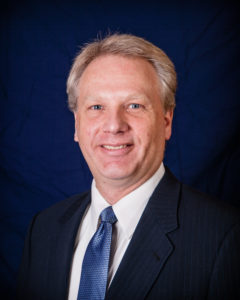The Hats I’ve Worn
I joined the staff of Gear Technology 30 years ago, as a lowly editorial assistant. I had just moved back to the Chicago area after a brief stint working for a family business in Louisiana. The nice people at Randall Publications offered me an opportunity to put to good use my journalism degree as well as my enthusiasm for math and science.
“You’ll be be writing and editing for a world-class magazine,” they told me, “conducting interviews with CEOs in a vital industry. You’ll be producing content that matters. Oh, and by the way, you’ll also be in charge of data entry for our subscriptions department.”
Wait, what?
The editors at that time (Peg Short and Nancy Bartels) sat me down and explained that to be successful in a small organization like this one, you have to learn how to wear multiple hats.
Huh, I thought. Maybe the job didn’t have quite the glamour of a newsstand title published in New York City or the prestige of working for a major news organization. But I needed the job, and even though I knew nothing about gears or manufacturing, the idea of writing about technology really appealed to me. And the other part didn’t bother me, either, because in addition to being a journalist, I’ve always been kind of a computer nerd.
So I took the job. And I learned to wear multiple hats.
And you know what? Peg and Nancy were right. As the data entry person, I personally saw every subscription that came into our office—which meant I knew better than anyone who the readers of Gear Technology were. That knowledge—that connection—has informed my writing ever since. Knowing your audience is key to creating good content, and I felt like I had the inside edge from the very beginning.
In 1996, we launched geartechnology.com. In the beginning it wasn’t even my project, but my inner nerd couldn’t resist it, so I picked up HTML and Perl programming, and before long I’d earned another hat. By the time we launched powertransmission.com in 1997, it really was my project, and I’ve been the main developer of our websites ever since, adding javascript and php programming to my repertoire along the way. And that early work I did with databases was sure paying off, too.
By this time, I’d moved up to “Associate Editor,” and I’d been given the authority to hire an assistant to help with both the data entry and website work, so learning to manage a team became just another part of the journey.
Then in 1998, I became Managing Editor and Associate Publisher, and I had the opportunity to guide not just the editorial vision and the execution of the websites, but also the overall strategy of our business and all its aspects. Including marketing, sales, HR and whatever else came up.
Of course, I was fortunate to have worked all that time alongside Michael Goldstein. As I grew into the role, he always gave me plenty of free rein to manage the business, guide the team and make mistakes, which I appreciated as much as his insight and vision over the years. When he retired at the end of 2019, I was honored to take over as Publisher and Editor-in-Chief and help our team transition to being on the staff of the AGMA.
Today, Gear Technology is celebrating its 40th anniversary, and I’m proud to say I’ve been a big part of who and what Gear Technology is for 30 of those years. I’m extremely grateful to my team, whose contributions have honestly been a much bigger part of the success of this publication than mine: Dorothy Fiandaca (33 years of service), Carol Tratar (21 years), Matt Jaster (15 years), Dave Friedman (14 years), Megan Harrold (3 years), Aaron Fagan (2 years) and Jess Oglesby (1.5 years).
I’m also grateful to the gear community at large, including all the readers, advertisers and contributors I’ve gotten to know so well over the years. I look forward to serving all of you for many years to come as the steward of Gear Technology, the Gear Industry’s Information Source.
But most of all, I’m grateful for that early advice. If any of you readers are at the early stages of your careers, don’t be afraid to take on something new, especially if it’s the kind of work nobody else wants to do. You might discover that the unique insights and skillsets you acquire will pay off in ways you didn’t expect.






